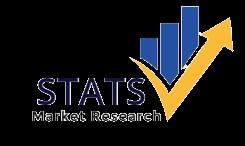














Non-invasive respiratory monitoring refers to the use of non-invasive devices and techniques to monitor a patient's respiratory function without the need for direct penetration of the body. These devices play a crucial role in tracking the patient’s respiratory health, often measuring parameters such as oxygen saturation, respiratory rate, lung capacity, and airflow. They are widely used across various medical fields to provide real-time data, allowing healthcare providers to detect abnormalities and intervene early, thus preventing complications.








The global Non-Invasive Respiratory Monitoring market is poised for significant growth. As of 2024, the market size was estimated at USD 7,612 million and is projected to expand to USD 11,418.91 million by 2032. This growth represents a Compound Annual Growth Rate (CAGR) of 5.20% during the forecast period. CAGR of 5.20% (2025 – 2032)








• Spirometer: Measures lung function by assessing inhalation and exhalation volumes.
• Pulse Oximeter: Monitors oxygen saturation in the blood.
• Peak Flow Meter: Measures the maximum speed of expiration, critical for asthma patients.
• Capnographs: Used to measure the concentration of CO2 in exhaled breath.








By Applications:

Hospitals: Hospitals are the largest end-users of noninvasive respiratory monitoring systems due to the high volume of patients requiring respiratory care.

Clinics: Non-invasive monitoring solutions are also widely adopted in clinics for routine checkups and management of chronic conditions like asthma and COPD.

Home Care: Home healthcare is an emerging segment, driven by the increasing preference for remote patient monitoring and chronic disease management.








• VYAIRE
• Smith & Nephew
• GENERAL ELECTRIC
• ResMed
• Masimo
• COSMED srl
• Including or Excluding key companies relevant to your analysis.
























